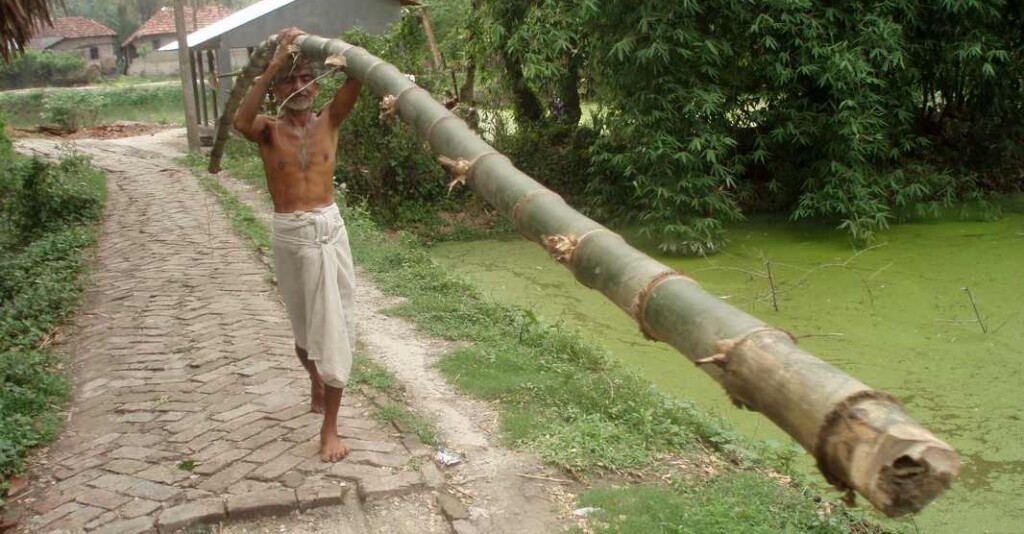 An Indian man transports bamboo, unrelated to the story – credit Matthieu Aubry, CC 2.0. via Flickr
An Indian man transports bamboo, unrelated to the story – credit Matthieu Aubry, CC 2.0. via FlickrFrom India comes the story of a tribal community who gained ownership of a lush bamboo forest and used it to brighten the futures of the otherwise poverty-stricken inhabitants.
According to a monumental piece of legislation passed in 2006, any indigenous community can apply for ownership of federally-owned land on which they have a traditional claim. Called the Forest Rights Act, its effectiveness has been spotty, since many indigenous forest dwellers are unaware that it exists, and few are willing to litigate on their behalf.
But for the dwellers of Pachgaon in the Indian state of Maharashtra, three years of persistent inquiries and form-filing rewarded them with ownership over a 2,500-acre bamboo forest which they have turned into a community silviculture business that takes care of the whole community.
It also stymied migration to the urban centers of Gujurat and Karnataka, keeping community members in the region of their ancestors, while making a not-insignificant profit of around $41,000 a year for the village.
“The day we got the papers was a festival,” says Vinod Ramswaroop Tekam, a 35-year-old villager. “We were overwhelmed that we had won this right, that our [nonviolent protest] had paid off. We were now 100% assured that the forest was really ours.”
At a depot on the outskirts of Pachgaon, stacks of bamboo lie neatly cut and sorted into various sizes. Across Asia, bamboo is used in construction for scaffolding and aiding the correct setting of concrete. Because of this, hundreds of thousands of long sections are needed every day, and can generate a land owner millions of rupees.
The village’s bamboo business made a profit of 34 million rupees in the last 10 years, or $400,000, according to a special feature in the Guardian.
Not too dissimilar to a Western co-op, a village assembly called a gram sabha runs the bamboo lumber business. There are no foremen or CEOs, just one person designated to handle the paperwork.
The bamboo thrives even throughout the difficult monsoon years, when villagers from Pachgaon would often watch their crops flooded and destroyed in the rains, and, left thusly destitute, migrate to cities to perform odd jobs for low pay.
The profits made are spread through the gram sabha and address things like higher education for the community’s children, infrastructural improvements, and the acquisition of neighboring land to expand the business.
When the monsoons come and the bamboo cutting ceases, profits are used to pay villagers to perform work like digging drainage ditches and filling potholes.
“It’s simple,” says Gajanan Themke, 43, a worker-manager at the gram sabha. “If we don’t create jobs, people will migrate. More people in the village means better work and better execution of work.”The dream of the gram sabha and Pachgaon is simple: keep the next generation here and keep their traditions alive. India Law Allows Villagers to Claim 2000 Acres of Bamboo Forest to Turn Poverty into Prosperity:
Categories: India,
Media
